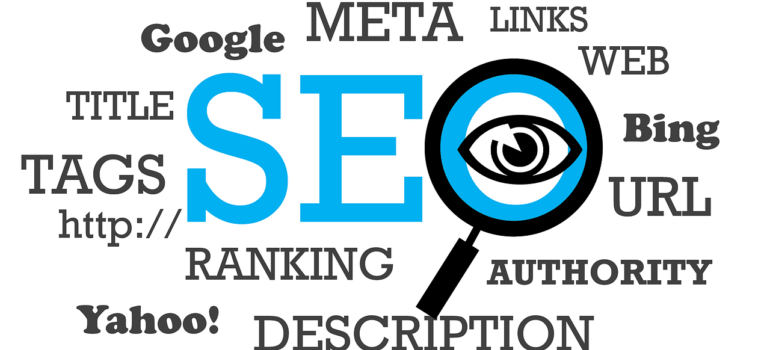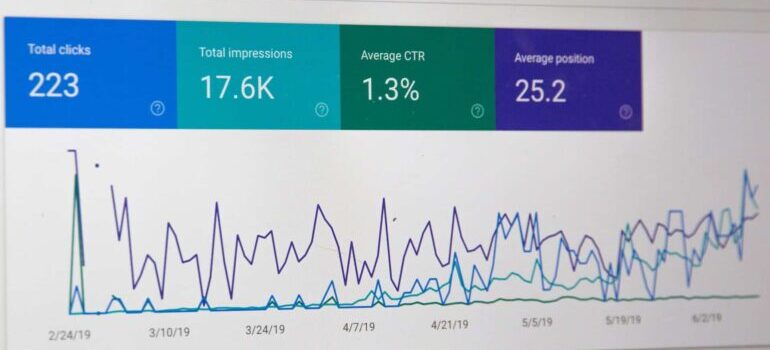In today’s world, the success of your business is highly dependent on how well your website ranks on Google’s SERPs (search engine result pages). As reported by Advanced Web Ranking, a whopping 67% of all clicks on search engine results pages (SERPs) go to the top 5 listings. In addition, the first page of search results receives 95% of all clicks, whereas the subsequent pages receive just 5%. It’s undeniable that a better ranking will bring in more visitors. Furthermore, more visitors mean more potential customers, and more customers mean more conversions. However, Google has become notorious for rolling out updates that, more often than not, can hurt your moving company advertising strategies. With that in mind, knowing how to control your presence on Google SERPs has become more important than ever!
How does ranking work?

In a nutshell, businesses use various components of SEO (search engine optimization) to rank themselves as high as possible on SERPs. It’s every website owner’s dream to learn that their website has reached the top place on the first page of search results. And although seemingly impossible, the latter is actually achievable through conducting thorough keyword research, link building, and utilizing meta tags, which are also key components of HTML.
Meta tags, in particular, are quite important. They let search engines like Google learn more about the content of your site. The information is, then, used to determine the page’s ranking and to show the page’s title and snippet in search engine results.
Last year, Google released an update concerning none less than meta tags. It’s precisely this change of algorithm that has rendered the SEO world speechless. That being said, let’s take a look at the said update and how one might bypass it to ensure the best ranking possible!
Ground-shaking update that made it (almost) impossible to control your presence on Google SERPs
As we already mentioned, back in August 2021, Google altered its algorithm that was responsible for the website title generation and generation of web page descriptions on SERPs. Prior to this change, through the use of meta tags in HTML, site owners could dictate exactly what would show up in Google’s page titles. However, following this modification, Google became capable of disregarding title HTML elements in the case they do not properly describe the page’s content. What it started doing, instead, is rewriting the page titles based on the headers and content of the page itself. Back at the time, a large number of sites saw their click-through rates (CTR) drop as a result. This further led to a precipitous drop in their organic traffic.
Now, why make a change this big? According to Google, it was necessary because, more often than not, HTML title tags weren’t used the way they were meant to. Their main purpose was to describe the content within the page; the thing that most actually failed to do.
Chances are your business was affected by this update. If yes, then it’s time for you to reevaluate your digital marketing tactics. The best way to optimize your title tags and get around this change is with help from those that have more experience dealing with SEO. For instance, Movers Development can provide you with PPC management for moving companies that is bound to elevate your business and help you better control your presence on Google SERPs… or rather, regain it!
And that brings us to title links…another change that this update has brought!
Title links vs. Title tags

Despite them sounding like the same thing, they’re not. Although they are connected. According to Search Central’s Advanced SEO guide, title links are the text at the top of a Google search result that links to a certain web page. On another hand, title tags are HTML components that let you give a title to a page. These tags are, further, used to generate title links…or the thing that people first see on SERPs.
Users may quickly get a feel for the information presented on the web page through title links. In fact, people rely heavily on these links to determine whether or not they should click through to the destination page. That’s why it’s so important to use adequate title tags to improve click-through rates, generate top moving leads, and, finally, improve conversion rates.
How to write title tags?
If you want to better control your presence on Google SERPs, think about upping your title tags writing game. To achieve results, you might want to follow these tips:
- Every page should have an original title. If you want search engines to properly index your site, each page needs its own unique title tag. When creating Google page names, stay clear of repetitiveness! It makes it difficult for Google to categorize your pages and distinguish them one from another.
- Stick to the point. Title tags for websites should be 50-60 characters in length. If you have a lot of fluff in your title, it will get cut off when shown as links. That’s why it’s important to be descriptive yet concise when writing these tags.
- Include the name of your brand. If and when appropriate.
- Don’t overdo it with keywords. Keywords can bring your SEO to another level, but they can also be your demise. Google is capable of recognizing keyword stuffing and doesn’t take kindly to it.
Snippets
What do snippets have to do with solidifying your SERP presence? Well, believe it or not, a lot. Snippets provide a glimpse of the content of a page and are included in Google search results. Google employs a number of strategies to create a snippet that is most relevant to a user’s query. It generates these summaries based on the information in the meta description and the content of the page. And while meta descriptions may be as lengthy as you like, snippets will unfortunately only show 155-160 characters. That being said, to ensure your site positions well in search results ensure all of your pages have meta descriptions that are high-quality, contain relevant information, and are concise…much like title tags!
Retain your presence on SERPs

Your website might have been affected by the change in Google’s algorithm. Then again, it might have not been. Whatever the case may be, optimizing HTML elements like title tags and meta descriptions will undoubtedly help you better control your presence on Google SERPs. After all, by doing so, you guarantee that your website will receive the traffic it deserves!






